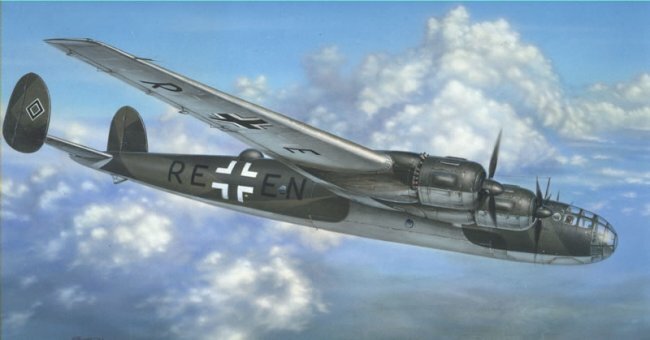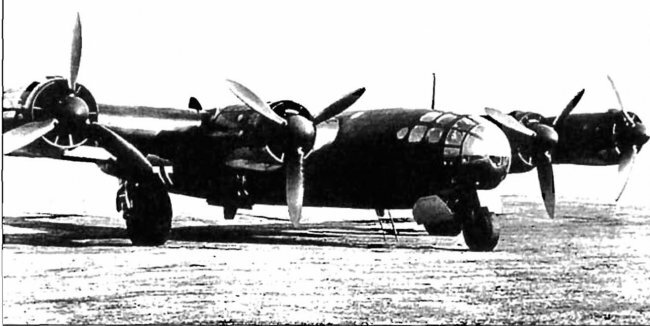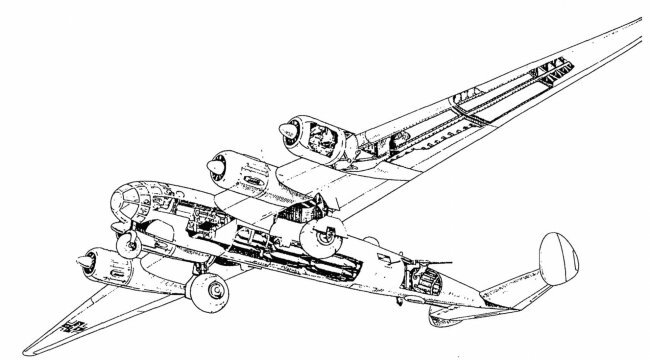Messerschmitt Me 264 - ultra-long range reconnaissance and bomber
Messerschmitt Me 264 VI, equipped with Junker Jumo 109-211 motors
X-ray of Messerschmitt Me 264 in flight
However, before the implementation of the order is not reached. After the death of Udet, RLM's interest in the project noticeably cooled. Work continued, but there was no question of urgency categories and additional staff. And even the positive calculated flight characteristics, which provided the vehicle with a long-range reconnaissance mission or a long-range bomber (as suggested by Messerschmitt), could not raise interest in the project from the RLM. Messerschmitt Me 264 VI still made its first flight in December 1942. With relatively weak engines, he showed good flight data. Further test flights confirmed the high calculated flight characteristics and gave impetus to the further development of the Me 264.
Variants of the aircraft with six piston engines and additional jet engines, samples with four powerful BMW 109-018 TRDs or two BMW 109-02S turboprop engines were envisaged as further modifications to the project.
Color image of Messerschmitt Me 264 with four turbofan engines
However, even with the basic Me 264 variant and the plan envisaged for equipping the machine with more powerful Jumo 109-213 engines, things progressed extremely slowly. In May, 1944 of the year Me 264 VI was completely destroyed by incendiary bombs. Me 264 V2 also suffered from air raids, and the corresponding repair was never carried out because of the constantly deteriorating martial law of Germany.
Tactical and technical characteristics of the Me 264 VI
Wingspan Length Height
Wing area Wing extension Take-off weight Speed Range Engines
43,00 M
20,90 m
4,30 m
127,70 m2
14,5
Armament Shooting point A Shooting point B1 Shooting point B2 Shooting point C Shooting point D
1MG131 1 MG 131 1 MG 151
1MG 151
2MG 151
1913 - Karl Baur was born on November 13 in Laichingen (Württemberg).
1930 - After school and exams, Karl Baur makes his first glider flight. Together with his friend Wolf Hirt, he belonged to the pioneers of this sport.
1936 - Engineer Experimental Research Institute of Aerodynamics in Göttingen.
1940 - Design Engineer and Test Pilot at Messerschmitt AG in Augsburg. Karl Baur is actively involved in the development of the Me 223 “Giant” wide-body transport aircraft.
1942 - Head of the flight test service of the company Messerschmitt. Test flights on the Me 261 long-range scout and Me 264 long-range bomber (“bomber for America”). There was no such machine Messerschmitt, which would not fly this pilot.
1945 - After the end of the war, Karl Baur goes to the USA, where, as the lead engineer of the VIS, the Vogue Aircraft Company is responsible for the testing of deck bombers. 1963 - Karl Baur died in the USA at the age of 50.
Captain Carl Baur (1913-1963) next to Messerschmitt Me 264 - “bomber for America”. There was no such machine Messerschmitt, which would not fly this pilot.





Information